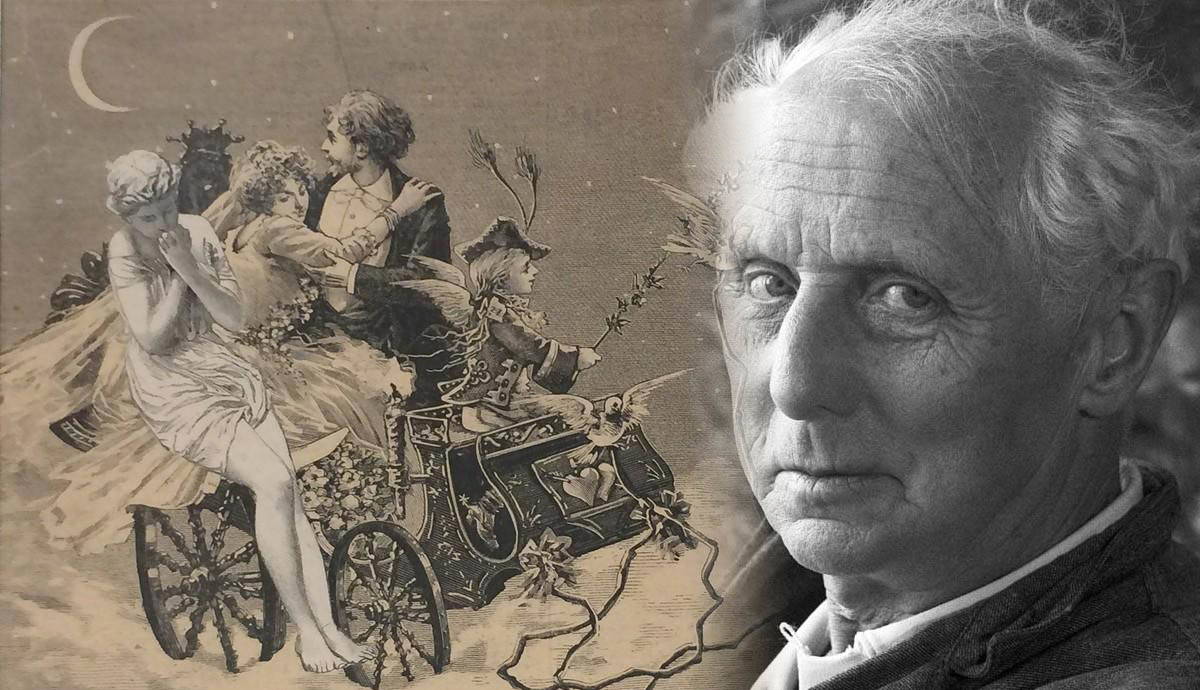
Born in Germany, but a naturalized citizen of France and the United States by his time of death, Ernst is an undoubtedly an interesting character. He’s known as the founder of the Dada and Surrealism movements and is one of the most beloved and mysterious artists of the 20th century.
To learn more about Ernst, here are seven intriguing facts about the man behind an even more interesting body of work.
Ernst’s father was a disciplinarian which had a major influence on his work
Ernst’s father was incredibly strict and overbearing. He was a teacher and had an affinity for academic art so he taught his son the classical and traditional painting techniques. From his father is the only training Ernst ever received.
Still, Ernst wasn’t particularly fond of his father and felt he was mistreated. He seemed to defy tradition and authority later in life, both in his work and in the choices that he made in the real world.
You can see his feelings toward those in power in the art he made as well as in his creation of the Dada and Surrealism movements which championed rebellion and going against the grain.

Ernst was traumatized by his experiences in the military during World War I
During World War I, Ernst served as an artilleryman on the West and East fronts. His time in the trenches left him badly disillusioned and even further removed from Western ideologies. On top of his disdain for authority brought on by experiences with his father, his time in the military surely shaped his affinity for Surrealism even more.
Ernst was so shaken by the First World War that he lived in New York City as a refugee during World War II, fleeing from Nazi police and continuing with his art in America. Interestingly, two of his paintings were included in Hitler’s Degenerate Art exhibition which was put on by the Nazi government to expose the public to the “art of decay.”

Ernst added tiny inscriptions in almost all his paintings.
If you look closely at most of Ernst’s paintings, you’ll see that he’s added small, almost indiscernible inscriptions somewhere within the paint. Usually in French, sometimes these inscriptions describe the piece and sometimes they’re something more mysterious.
Call it an aspect of Ernst’s work that is truly surreal. Next time you see one of his paintings at a gallery, take a closer look and see if you can make out the inscriptions.

Ernst founded the Dada group with Jean Arp
Along with Surrealism, the Dada art movement is another project that Ernst was deeply connected with. Dada art sprung from World War I and is a reaction to the horrors and follow of war. It is often satirical and nonsensical.

During his Dada period, Ernst often worked with collage since he felt it was the best way to express irrationality. Overall, this period remains controversial and is certainly an interesting aspect of Ernst’s career.
Ernst was deeply interested in psychology and the mentally ill
Ernst studied philosophy and psychiatry before committing fully to his art. He noted his fascination for creative endeavors achieved by those deemed mentally ill. He felt they could make connections to unfiltered creativity and primitive emotions more readily than those of “sound mind.”
In the creation of the Surrealism movement, Ernst used Freud’s dream theories. He experimented with hallucinogens and hypnotism, attempting to transfer his dream state directly onto canvas.

Essentially, Surrealism was a way to use art in capturing the subconscious. Ernst developed techniques to adequately capture subconscious desires such as pressing two surfaces together or rubbing one surface across another and using the “accidental” elements that formed. He also used automatism which is a sort of stream of consciousness approach to art.
Ernst dabbled in a wide variety of art genres
You may see Ernst in the “typical” artist way, working with paint and a canvas. However, Ernst was creative in some of the most unimaginable ways. He painted, sculpted, wrote books, drew sketches, made collages, orchestrated live art – he was an artist and creative in every sense of the words.

The Museum of Modern Art did an exhibit about Ernst called “Beyond Painting” to illustrate the vast interests and skills Ernst shared with the world as an artist. Here’s a link to the exhibition.
Ernst was once married to the famous art patron Peggy Guggenheim
As an art collector and a lover of all things art, you’ve surely heard the name Guggenheim. The famous New York gallery is named after the Guggenheim family and for a time, Ernst was part of that family.
During his voluntary exile in New York, Ernst met Peggy Guggenheim and they were eventually married. Guggenheim was Ernst’s third wife and even so, the two were eventually divorced. He was married for a fourth time to the Surrealist painter Dorothea Tanning when he moved to Arizona.

It’s possible to conclude that Ernst had a troubled life. From his dictatorial father to traumatic military service to four wives, perhaps he never really got it together. Perhaps not quite a tortured artist, he certainly gave the world some incredible pieces of art from such an incredible life that was lived out to its fullest.







